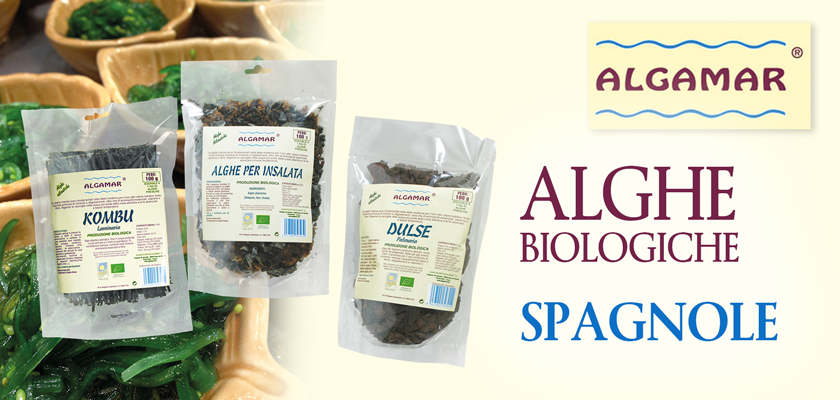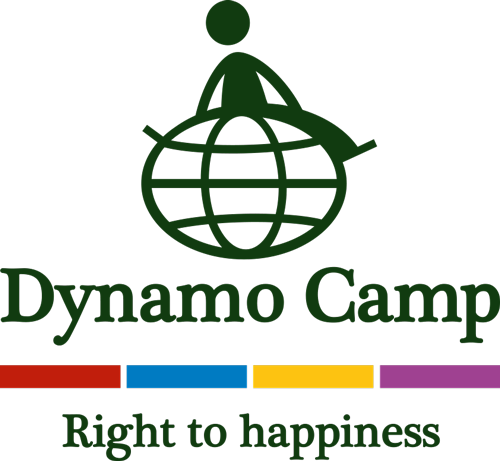
Galicia (north -west Spain) represents 35 % of the Spanish coast .
It is a region with an abundance and variety of marine species and with a well-established maritime tradition. Its position between 42 ° and 44 ° N looks curiosly like the latitude of the coast of Japan.
The exceptional richness of the sea Galician is mainly due to its geographical position, to the great ocean currents that flow in this area, to the jagged and suggestive shape of its coasts.
Its annual capacity to produce so much living material is comparable to that of the equatorial forests and makes it one of the richest marine habitats in the world.
As for the algae, here we find the best quality in southern Europe, which create real underwater gardens of extremely varied shapes and colors.
These are precisely the variety offered by Algamar , the first Spanish company in the collection and processing of algae for food.
The algae are harvested by hand and then dried at low temperatures.
For the purity of the waters in which they are harvested, the algae Algamar are certified as biologic according to European standards. The main universities in Galicia together with the Complutense University of Madrid and the Higher Council for Scientific Research have shown interest from the beginning of the adventure of Algamar, doing studies on these exceptional products donated by the sea.
AWARD FOR BIODIVERSITY
The founders of Algamar, Clement and Fermín Fernández Sàa received the Award for biodiversidad Entrepreneurs 2009 by the Ministry of Environment and Rural and Marine Affairs of Spain, in recognition for their work
and especially being a business model for innovation and sustainable management of natural resources, as well as for "the powerful demonstration effect of the project, inspiring other initiatives."
A commitment to environmental guardianship that continues up to today, with a building industry that has provided solar panels and self-production of clean and renewable electricity, getting the prize to the company Company Exemplary by the Fundación Félix Rodríguez de la Fuente.
The last international recognition of this year 2014:
Algamar has been selected as one of the "Companies protagonists for global green economy", by the Ministry of Environment of Spain and Fundación Biodiversidad.
Algae are a type of food consumed since ancient times in all countries bordering the sea. Chinese documents dating back to 4000 years ago, attach to algae health, longevity and happiness.
Today we have been proposed again by the Japanese restaurants that offer the typical sushi but even before the macrobiotic diet to foods that are irreplaceable. In truth they were already used in ancient times in our coasts of southern Italy, Hawaii , nell'Altantico - by the Celts and Vikings - from Mexico to New Zealand, getting to Korea and South America.
Each alga has its own specific nutritional characteristics and use ( read the labels of each of the nutrition and health claims!), but the more interesting aspect is the content in mineral salts that, varying according to the different algae, can also be the highest in the globe !
Of course the have to be taken as food, not as a supplement: our body has all the capabilities to absorb nutrients from food and only in certain cases need supplements. The first beneficial effects (depending on the type of seaweed) can be observed on the teeth, hair, nails, skin, thanks to its mineral content.
GET TO KNOW THE ALGAE
First of all there is to say that for the consumption of seaweed we recommend to soak the algae twice in cold water for fifteen minutes, changing the water between the first and second soaking.
This will allow on one hand to remove the impurities preserving the nutritional and organoleptic characteristics, and on the other hand a better management for the preparation of food.
Algamar offers a wide range of algae. Here are their main features, to start to know more about these priceless treasures of the sea.
ALGAE KOMBU:
Brown seaweed of the family of Feofite, lives in depth, so that its collection is rather laborious, even in case of low tides. The Kombu seaweed is the most consumed food in the world, with over 600,000 dry tons per year. It is great if added cooking legumes because it facilitates the digestion and decreases the sense of swelling that can occur after its consumption , thanks of glutamic acid that characterizes it.
ALGAE WAKAME:
It belongs to the family of brown algae (Feofite), lives in deep water and can reach a length of one meter and a half! It’s an essential ingredient for preparing the famous "miso soup", it’s delicious added to soups making them even more nutritious. It is also one of the algae that can be eaten raw (always after soaking) sprinkled with lemon.
SPAGHETTI SEA ALGAE:
Its elongated shape gives the trade name to this brown algae of the family of Feofite, whose branches reach up to 3 meters in length. Delicate and slightly sweet they go well with sauteed vegetables in the preparation of sauces for pasta or patè for crostini. For its wealth of phosphorus it is called "intellectual seaweed." Its flavor makes is perfect for those who approach for the first time in this food.
DUSE SEAWEED:
Red algae of the family Rodofite, typically atlantic and of small dimensions (up to 50 cm), lives in deep and cold waters. The flavor is stronger, this alga is great to combine with sauteed vegetables, and also, like wakame, lends itself well to be consumed raw. Its special feature is a higher content of vitamin C and iron than other algae.
A curiosity: in Irish pubs it is served to accompany dark beer.
SEAWEED NORI:
It’s a red alga (Rodofite) of small size and purple color. It still is nowadays a wild algea in atlantic regions, not like those in Japan, and is together with the wakame and kombu that most consumed. There are two versions, in classical sheets used for the preparation of the "maki" Japanese and in green flakes ideal to flavor cereals and cooked legumes.
ALGAE AGAR AGAR:
It is an extract of Gelidium sesquipedale, excellent substitute vegetable of isinglass: it has a gelling ten times higher than that of animal gelatin. Indespensible as a thickener and great for the preparation of puddings, fruit and vegetable aspic.
Is not only used in the food industry but also in cosmetics, as an excipient in some pharmaceutical preparations and even in the textile industry where it gives luster and elasticity. Agar agar is pure soluble fiber, regulating intestinal transit, with a very low calorie intake.
SEAWEED SALAD:
mix of atlantic algae to make tasty and healthy salads. The mix is made from seaweed nori, wakame and dulse, rich in minerals, trace elements and vitamins.
On our blog you will find some cooking recipes based on algae.





